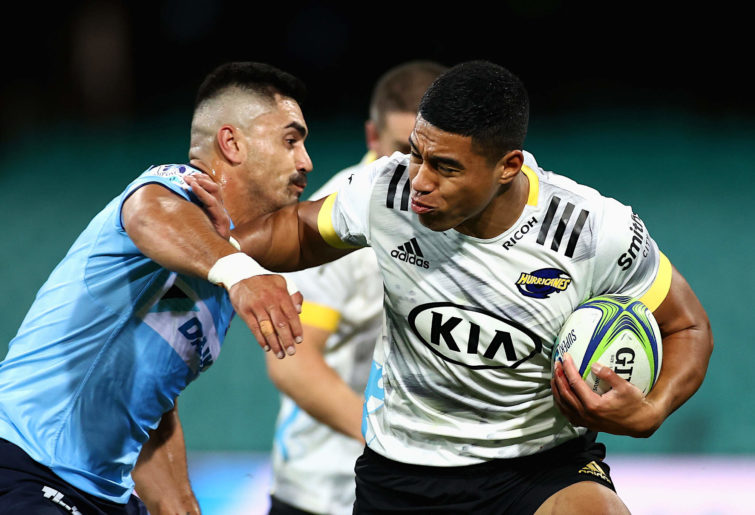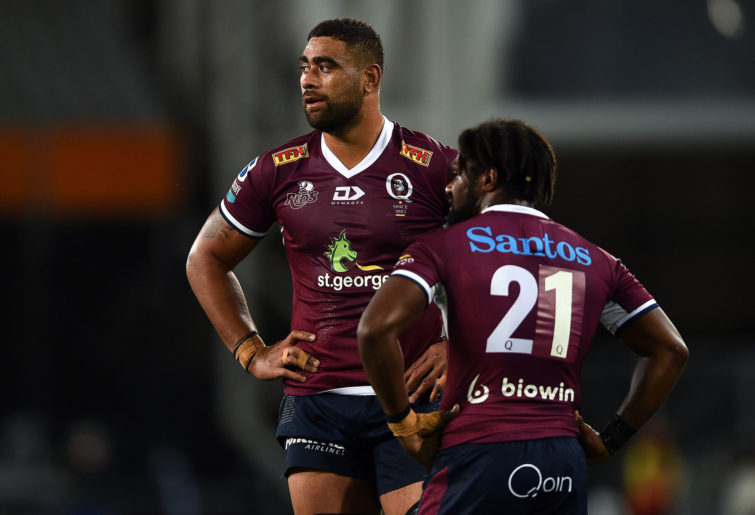As my esteemed companion Loosehead Greg has pointed out, Australian rugby has a problem.
We will continue to explore this in Part 2 of the series. It is commonly known that looseheads and wingers are integral parts of the brains trust on the field, so it’s no wonder that we have all the answers. Sit back and prepare to be inspired.
New Zealand is incredible at a number of sports, being ranked first in the world in rugby league, first in ODI cricket, second in Test cricket, and third in T20, plus they are the current holders of the America’s Cup – to name just a few accomplishments.
Rugby union is still the passion that burns in most New Zealanders’ hearts. Even though Australia is ranked behind New Zealand in all those sports, there seems to be a burning desire to take on the world’s greatest rugby team in the history of the sport, and sometimes in their own backyard too.
You have to admire that naive ambition. Australian sides are certainly gluttons for punishment.

(Photo by Cameron Spencer/Getty Images)
The Australian teams had success in the Super Rugby Australia competition, but what should now be clear is that was not good preparation when you get called to perform on the big stage.
Yes, an Australian team managed to win the competition (I’m looking at you Reds, kudos). It is also worth noting that an Australian team lost every game of the tournament too. Taken as an aggregate, that is only a 50 per cent win rate, in their own tournament. It is hardly worth crowing about, and yet strangely we hear constantly about what a success the competition was.
Taking a step back from sport for a second, New Zealanders often come to Australia to help this country out, and by doing so, as a former New Zealand prime minister once said, they increase the average intelligence of both countries.
Gone are the days when New Zealanders would flock to the West Island to sit on the beach on the dole. They are lifters now, not leaners. Typically earning higher than the Australian average wage, they contribute huge amounts of tax revenue for the governments, while receiving very little social service support and being refused the vote and have a say on who spends those tax dollars.
While taxation without representation has sparked many a revolution or civil war, New Zealanders put up with this with a grace and countenance that is to be admired. You can just feel the Australian gratitude, can’t you?
Back to sport, what has become clear in the two rounds of clean sweeps so far in the Super Rugby Trans-Tasman is that styles and tactics matter, along with basic skills.
To get better, the Australian teams need to adjust to the different skill set and approach the New Zealand teams are using. In order to increase the rugby success here in Australia, is it any wonder that the path forward is to leech off the talent, skills and intelligence of the greatest rugby nation on earth?

(Photo by Cameron Spencer/Getty Images)
Schools often employ a system of exchange students: one of ours for one of theirs.
This could work for Australian rugby. Not at Super Rugby level of course, but at the former NRC or current NPC level. In the NPC, there are enough teams to allow for a large contingent of Australian imports to fit into 14 teams across two divisions.
This means, if you allowed two or three Australians per team, it would result in 28-42 players being exposed to New Zealand’s systems and tactics. That is basically an entire Wallabies squad.
This exchange would be reciprocal, having New Zealand players in Australia playing in an NRC type competition, increasing the talent pools and allowing the young players coming through the chance to learn and absorb the rugby IQ that the New Zealanders have developed playing out there on the frost-hardened grounds of the deep south; grounds where they have to scrap the snow away from the field markings with a garden hoe so players know where the lines are.
This would help develop the skill set and talents at this level, allowing players to step up into Super Rugby teams with a high skill set and better mindset. This is essentially like an intelligence or reconnaissance mission in enemy territory. And make no mistake, for all the obvious love between the two nations, rugby is war.
By understanding different styles and tactics, the Australian Super Rugby teams will be better positioned to adapt and change what they are doing. They may even be able to adapt and change tactics midway through a game if things aren’t working – something the current teams seem incapable of doing.
The Australian teams need to learn to respect the ball and possession. Too often they are kicking the ball away for the New Zealand teams to run it back to them. This worked against the poorly skilled Australian teams, but is a sure-fire way to get a cricket score posted against you when playing the New Zealand teams (Reds, I’m looking at you again).

(Photo by Joe Allison/Getty Images)
The teams that have performed the best are the ones with a structured and thought-out game plan: starve the other team of the ball, and stay disciplined and structured on defence.
One knife can sharpen another, so as Australian players get better by being in a New Zealand team, New Zealand players can get better by being in an Australian team.
New Zealand players, especially the ones taken in by teams that take a conservative, possession-based approach, will learn this trade and style. This will better equip them to deal with teams, particularly in the northern hemisphere, who tend to play that style, and which has been shown to be effective against the New Zealand teams.
The inclusion of two more Super teams will help with this exposure also. If the competition is set up as a big, 12-team tournament, then Australian teams will get exposure to all styles.
But if due to COVID we end up with a split competition, with the Fijian Drua in the Australian side of the draw, at least the Australian teams will be exposed to a high-speed and ball-running team that will better prepare them for the New Zealand sides if or when they were to face off.
While some might argue the answer is take your ball and go home, then pick weaker teams to play to ensure you have a chance of winning, that is not the way to get better. You might as well just stay home and play against other domestic teams, like Rugby Australia has been doing so far.































































































